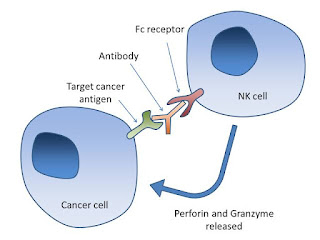IMMUNITY
The overall ability of the body to fight against disease causing microorganisms with the help of immune system is called immunity.
Immunity is of two types-
1. Innate immunity.
2. Acquired immunity.
Innate immunity
The immunity which occurs by birth.
non-specific type of defense.
Innate immunity consists of various barriers which prevent the entry of microorganisms into the body.
Innate immunity consists of four types of barriers.
- Physical barriers- Skin on our body is the main barrier which prevents entry of the micro-organisms and mucus coating of the epithelium lining the respiratory, gastrointestinal and urogenital tracts also help in trapping microbes entering our body.
- Physiological barriers- Acid in the stomach, saliva in the mouth, tears from eyes–all prevent microbial growth.
- Cellular barriers – Certain types of leukocytes (WBC) of our body like polymorpho-nuclear leukocytes (PMNL-neutrophils), monocytes and natural killer (type of lymphocytes) in the blood as well as macrophages in tissues can phagocytose and destroy microbes.
- Cytokine barriers- Virus-infected cells secrete proteins called interferons which protect non-infected cells from further viral infection.
Acquired immunity
The immunity which develops during lifetime by exposure to suitable foreign agents like microorganisms is called acquired immunity.
Acquired immunity is pathogen specific and it is characterized by memory.
When the body first encounters a pathogen it produces a response which takes long time to develop and of low intensity called as primary immune response and if the body encounters the same pathogen it produces highly intensified and quick response called as secondary immune response.
Reason- After responding to the foreign microorganisms and elimination of the pathogen, the immune system keeps the memory of the that encounter (primary response) and during its second encounter with the same pathogen produces a highly intensified immune response (secondary response).
The primary and secondary immune responses are carried out with the help of two special types of lymphocytes present in our blood,
- B-lymphocytes : produce an army of proteins in response to pathogens into our blood to fight with them- antibodies
- T-lymphocytes : The T-cells themselves do not produce antibodies but help B cells to produce them.
STRUCTURE OF ANTIBODY
Each antibody molecule has four peptide chains, two long chains and two short chains arranged in a Y shaped structure.
Two long chains are called heavy chains and two short chains are called light chains- H2L2.
Antibodies are also called as immunoglobulins (Ig).
Different types of antibodies are produced in our bodies which are IgA, IgM, IgE, IgG, IgD



















No comments:
Post a Comment